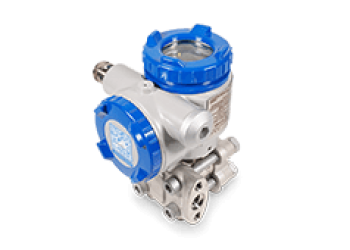
Absolute pressure transmitter - FKA
ref : FKAFrom
1557,00 € Request a quoteAbsolute pressure transmitters are used in applications where it is critical to measure absolute pressures without any dependence on changes in barometric conditions.
Download the brochure and find out how to improve your measurement accuracy with Fuji Electric absolute pressure transmitters .

The FKA high accuracy absolute pressure transmitter model and FKH high accuracy absolute pressure transmitter model accurately measure an absolute pressure and transmits a proportional 4-20 mA output signal.
The transmitter uses a unique high reliability micro-capacitive silicon sensor in combination with a state-of-the-art digital signal processing to provide exceptional performances in terms of accuracy and stability.



Absolute pressure transmitters measure the process pressure relative to atmospheric air, other gases, steams and liquids from the absolute zero reference point, i.e., perfect vacuum.
Any pressure transmitter takes measurements against a reference pressure.
In case of absolute sensors, they work using perfect vacuum pressure (absolute zero) as the reference.
A full vacuum has an absolute pressure reading of 0 bar and average barometric pressure at sea level is 1013,25 mbar.
In contrast, the transmitters that quantify the difference between the process pressures against barometric pressure are called gauge pressure transmitters. Differential pressure transmitters, on the other hand, measures two opposing pressures.

The intelligent pressure transmitter industrial FCX calculates the pressure by the deformation change of a metal diaphragm.
The low-pressure side of the sensor is subjected to an absolute vacuum and then sealed.
As a consequence, the measured deformation of the diaphragm is unaffected by external pressure and serves as the zero point for the closed vacuum envelope.
Because absolute pressure transmitters are not affected by changes in barometric pressure, they are more accurate than gauge pressure transmitters (for normal applications).
They also have high repeatability and long-term stability.
HIGH REPEATABILITY
LONG-TERM STABILITY

These pressure transmitters are generally more expensive than gauge pressure transmitters.
Another disadvantage of this type of sensor is that its maximum pressure capacity is much lower than that of digital gauge pressure transmitters. They require special tools to be calibrated and can often take longer.
You can ask our instrument calibration service team to help you with this task.
The unit of absolute pressure measure is indicated by the 'a' letter or the ‘abs’ abbreviation (i.e., in bar (abs), inH₂O (abs), psia or kPa(abs)).


Their range can go from the vacuum to several bars with long term stability.
The maximum working pressures that they can measure varies.
In many cases, they can measure pressures as high as 30 bar (abs) with excellent accuracy and stability.

In general, they are capable of measuring the pressure of any gas or fluid under pressure.
These pressure transmitters are used in the chemical and petrochemical industries, the food industry, the metallurgical industry, the oil and gas industry , and in research laboratories and institutes.
For these industrial applications, it is imperative that the measurements are accurate and to use a fixed vacuum pressure (absolute zero) as the reference.
Your processes are thus free of atmospheric pressure fluctuations.
An absolute pressure sensor is the only device that can measure atmospheric pressure, so it may be utilized to assess barometric pressure.
The calculation of altitude based on the variation in atmospheric pressure when the elevation changes is another example of how this may be utilized.

Changes in temperature, pressure, and humidity all affect the barometric pressure.
The atmosphere's pressure can fluctuate by about 30 mbar due to weather changes, and by about 200 mbar if the sensor's elevation changes.
As a result, for the same measured pressure, a digital pressure gauge may provide a measurement error owing to atmospheric pressure variations.
When measuring low pressures, this error could be significant.
In such a case, the use of an absolute pressure sensor is recommended.

A typical application is measuring the level of liquid that can be found using a gauge pressure sensor in open (i.e., non-pressurized) tanks.
Raw material liquids are stored, and the tank is freely vented above the liquid, the hydrostatic pressure of the liquid column is used to calculate the volume.
For low height tanks, levels could fluctuate significantly over time owing to ambient air pressure influencing both sensor readings and the vessel's ventilation, resulting in an incorrect liquid level being calculated.
It is important to choose for absolute pressure sensors to guarantee accurate measurement.